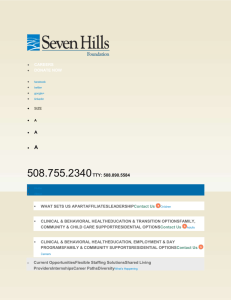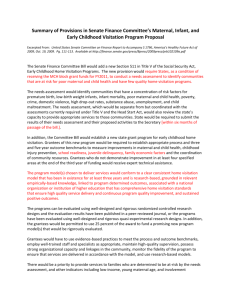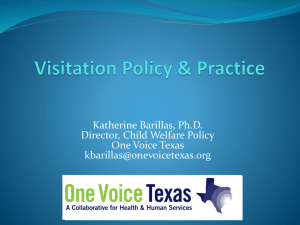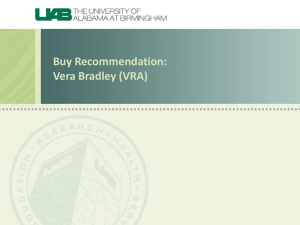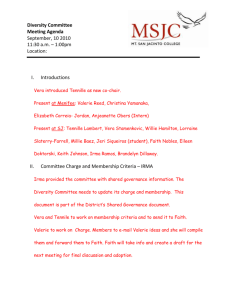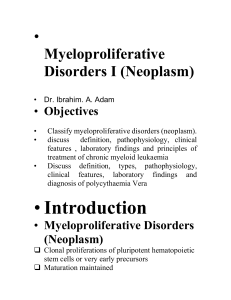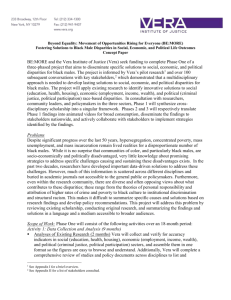facility - Jim Casey Youth Opportunities Initiative
advertisement
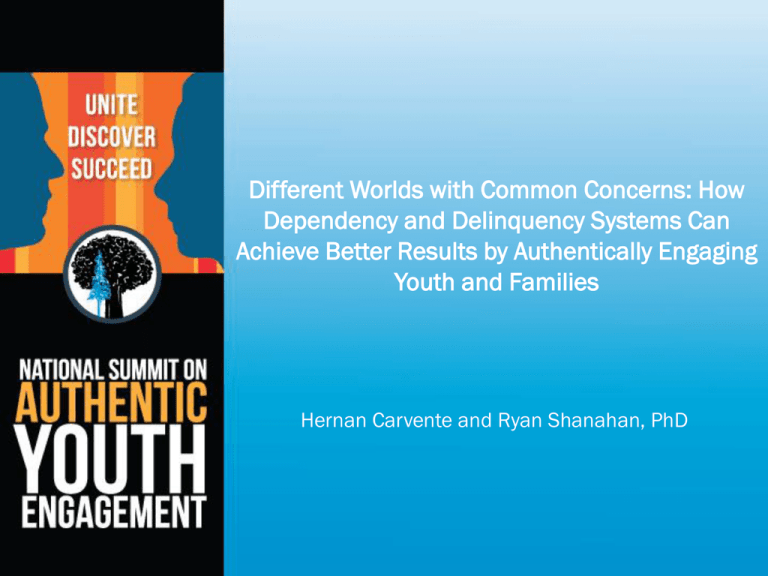
Different Worlds with Common Concerns: How Dependency and Delinquency Systems Can Achieve Better Results by Authentically Engaging Youth and Families Hernan Carvente and Ryan Shanahan, PhD Engaging Families • What are some BENEFITS to working with families of youth? • What are some CHALLENGES to working with families of youth? Why Work with Families? • Families are experts on their own lives. • Family members know each other best. • Family is a natural support system for early crisis intervention. • Families have a long-term investment that outlasts treatment and government interventions. Research on Family Engagement Family Justice Program • Vera’s Family Justice Program provides extensive training and strategic support to government and community partners to help them effectively draw on the resources of families and communities. These systemic interventions are designed to benefit people at greatest risk of cycling in and out of the justice system. • The Vera Institute of Justice is an independent nonprofit that combines expertise in research, demonstration projects, and technical assistance to help leaders in government and civil society improve the systems people rely on for justice and safety. Family Engagement Matters A family-systems approach not only reduced recidivism rates for justice-involved youth as compared with other models of treatment, but also reduced rates of siblings’ involvement in the justice system. (Klein, 1977) The protective effect of receiving parental visits during incarceration exists regardless of the quality of the parent-adolescent relationship. (Monahan, Goldweber, Cauffman, 2011) Youth Who Receive Visits Have Fewer Behavior Incidents Youth Who are Visited Weekly Have Better GPA’s 90 85.0 GPA 85 80 80.4 82.0 75 70 Never Less 1 week Visitation Frequency Weekly Distance to Facility Is a Barrier to Visitation School District 11 2 5 7 9 8 4 1 Average Number of 21.5 19.3 Visits per Year 18.8 13.3 9.6 9 3.6 3 6 10 2.1 0 FACILITY High visitation rates Medium visitation rates Low visitation rates Tools for Authentic Family Engagement Juvenile Relational Inquiry Tool • Goals of the Juvenile Relational Inquiry Tool: • To provide staff with a user-friendly method of recognizing and reinforcing positive connections to family and social networks during and after incarceration. • To build rapport between the professional using the tool and the incarcerated individual. The Genogram X X James 1929-2006 Eleanor 1932-2007 MALE Grace b. 1952 Robert b. 1953 FEMALE SUBSTANCE ABUSE James Jr. b. 1955 Cynthia b. 1978 Henrietta b. 1960 Incarcerated Martin b. 1984 CRIMINAL JUSTICE INVOLVEMENT Paula b.1961 MENTAL ILLNESS CHRONIC ILLNESS DECEASED EMPLOYED RELIGIOUS AFFILIATION HIGHSCHOOL GRADUATE TAKES CARE OF CHILDREN IN SCHOOL Ray (Mr. A) b. 1957 Annette b. 1960 Chloe b. 1994 MARRIED SEPARATED DIVORCED FAMILY VIOLENCE The Ecomap The Ecomap Godmother Religious Services School YOUTH Friends at Facility Unit Staff Psychologist CONFLICT NEUTRAL STRONG Mother and Sister Miracle Question Imagine you go to sleep tonight and a miracle happens: your challenges no longer exist. When you wake up tomorrow, what will you notice first that tells you a miracle has happened and things are different? Scaling Questions Resiliency Questions What keeps you going? How have you managed? Exception Questions Were there times recently when the problem did NOT occur? When was the most recent time you were able to…How did th happen? What was different? Who was involved? Implementation • Write down one thing you can do the moment you get back from this training. • Write down one thing you will do within one week. • Write down one thing you will do within one month. Contact Information http://www.vera.org/centers/family-justice-program Hernan Carvente (212) 376-3113 hcarvente@vera.org Ryan Shanahan, PhD (212)376-3071 rshanahan@vera.org
